Varieties of date palms and care for them

The date palm is far from uncommon in houses and apartments. This ornamental plant with spreading leaves looks very exotic and can become a real interior decoration. In our article, we will dwell in more detail on the features of growing this unusual crop and caring for it.


general description
The date palm belongs to crops from the Palm family. Under natural conditions, it is found in the tropics and subtropics. This culture was mentioned by Pliny, Theophrastus and Herodotus in their writings. The plant was known as early as the 4th century BC. NS.
The date plant has one or more sturdy trunks. Leaves are pinnate, elongated, narrow, pointed at the apex. Dates are suitable for human consumption, in a number of countries they are used for sugar production and are fed to farm animals. India and some territories of the African continent are considered to be the homeland of culture.
In nature, trees can live up to 100-150 years and quickly reach a height of 35 m. When grown at home, they will not bear fruit.

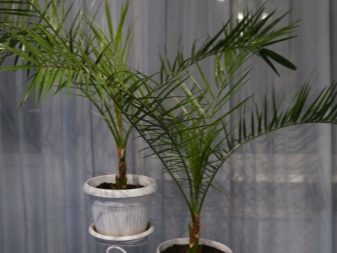
Views
The following species are most widespread as domestic and greenhouse crops.
- Ordinary. One of the most famous, it has a high growth rate. It has only one drawback - as it grows, the trunk of the palm tree gradually becomes bare.
- Robelena. It belongs to the undersized varieties, it grows only up to 2.5 m in height. Leaves of young subspecies can be covered with a light bloom. Unlike many other palms, this one withstands light shade.
- Canary. A low-growing plant, the height is up to 2 m. The leaf plates are narrowed, elongated, rather dense. The trunk is firm, straight, there are thorns on the petioles.
- Curved. Forms several strong trunks, in nature it grows up to 8 m. Petioles with thorns, white hairs are noticeable on the leaf plates.
- Forest. High, reaches 12 m. The trunk is single, sharp thorns grow on the petioles.
- Rocky. Palm tree up to 6-7 m long. The trunk is one, the petioles are covered with thorns.
- Ceylon. Medium plant up to 5-6 m high. The trunk is single, petioles with thorns, the leaves are shortened.
The royal and Israeli varieties are very popular.
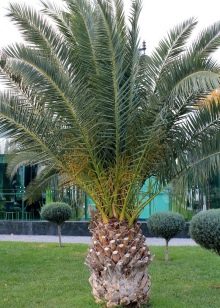
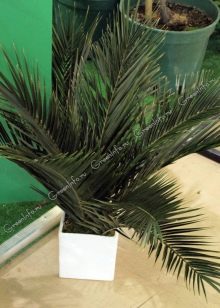
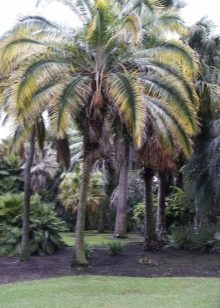
Landing
The optimal periods for planting a date tree are late winter and early spring. To obtain quality seed, you can contact any gardening store. But it is not at all necessary to buy seeds, you can buy fruits, eat the pulp, and plant the collected seeds. Seedlings must be freshly harvested, no mechanical damage, areas infected with pests and rot are not allowed.
Do not heat the seeds. It should also be borne in mind that old seeds may lose their germination. Therefore, when choosing dates for planting, you need to select fruits that are no more than a year old. Before planting, the seed should be soaked in water heated to 30-35 degrees for several days. Additionally, you can use "Epin", "Kornevin" or another stimulant of root formation.
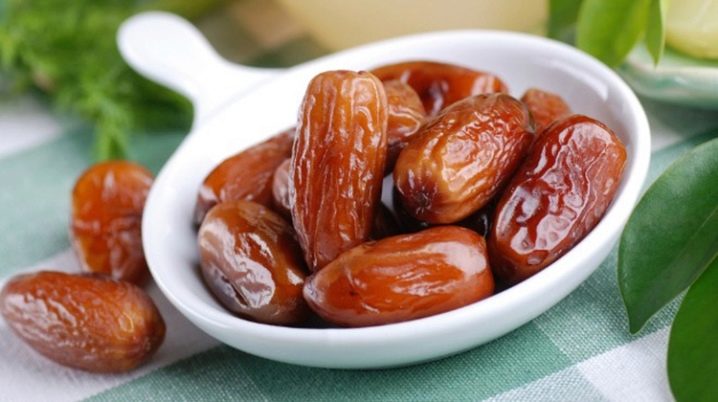
Also germination of seedlings is carried out using cotton wool. To do this, the cotton wool is moistened and placed in a clean bowl.A bone is laid out on top of the wet lump and covered with a second layer of cotton wool. In this state, the seeds are kept until the beginning of swelling, if necessary, moistened with filtered water. Alternatively, gauze, sawdust, and hydrogel are used. To improve germination, experienced flower growers process the seedlings with boiling water or pass them with sandpaper, and only then plant them. Germination in moist vermiculite will be more productive.
With any method, after the appearance of the first thin roots, you must immediately transplant into the ground.
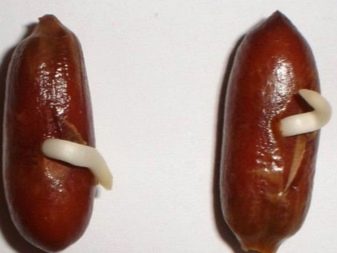
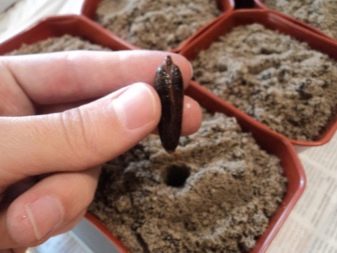
The date crop container should be deep, since the plant has a rather long rhizome. But at the same time, it cannot be too narrow. It is advisable to opt for containers of light shades, made of plastic or wood. They heat up less and retain moisture longer. When choosing a place for dates, you need to take into account that the plant does not like drafts, low temperatures, as well as direct ultraviolet rays. A container with a palm tree does not need to be placed on a cold concrete floor; you should not place it on a windowsill. As soon as the outside air temperature warms up to 12 degrees or more, you can move the palm tree outside.
It is important to choose the right soil. It must be fertile, drained, moisture-permeable. In specialized stores, you can find soil specifically for palm trees. A versatile substrate for green pets will also work. If possible, you can prepare the soil mixture yourself. To do this, take clean sand, turf in equal proportions, as well as compost or humus, and add superphosphate at the rate of 1 tbsp. l. for every 2 liters of soil.
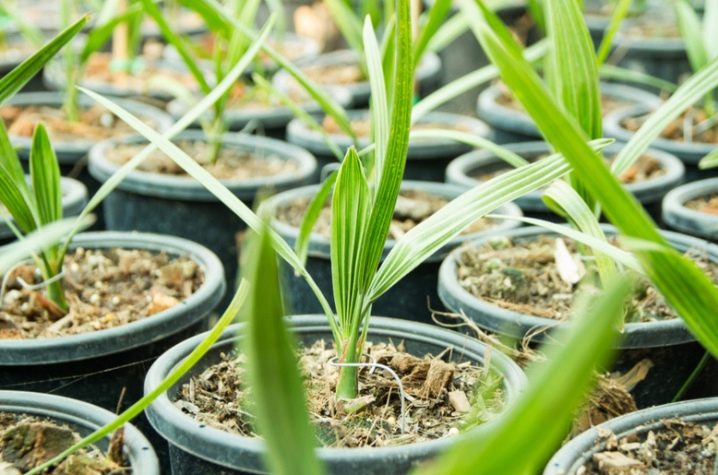
Care
Palm is an exotic culture of hot countries, so it is important for it to create the most comfortable conditions.
Conditions
In the natural environment, the palm tree grows under direct UV rays. But at home such conditions cannot be provided, therefore it is best to place this plant near windows facing south, east or west. On hot summer days, the culture needs to be shaded. From time to time, the palm tree needs to be turned to change the position of the leaves in relation to the light. If this is not done, the leaves of the plant will actively grow from only one side. With a lack of light, palm leaves begin to stretch out and wither.
The temperature background plays a key role. Dates grow and develop best at 23-25 degrees, in the summer season the plant can tolerate up to 30 degrees.
However, elevated temperatures must be accompanied by high humidity, otherwise the plant will begin to wilt.
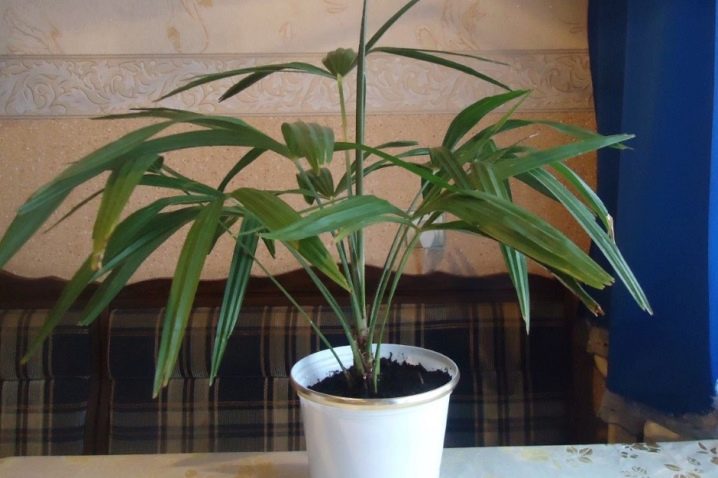
In winter, a state of rest should be ensured, the optimum temperature at this time is considered to be 18 degrees, it can be lowered to 14. Sharp temperature fluctuations have the most detrimental effect on the palm tree. With the arrival of heat, the plant can be taken out onto a balcony or loggia. At first, it "walks" no more than an hour, then the time spent in the fresh air is increased.
The humidity level in the room should be 50-70%. It is not recommended to keep the date palm near the radiator during the heating system operation. Its leaves should be wiped with a damp sponge from time to time.
In dry weather, as well as on hot days, the plant should be sprayed with warm water from a spray bottle at least 1 time per week.
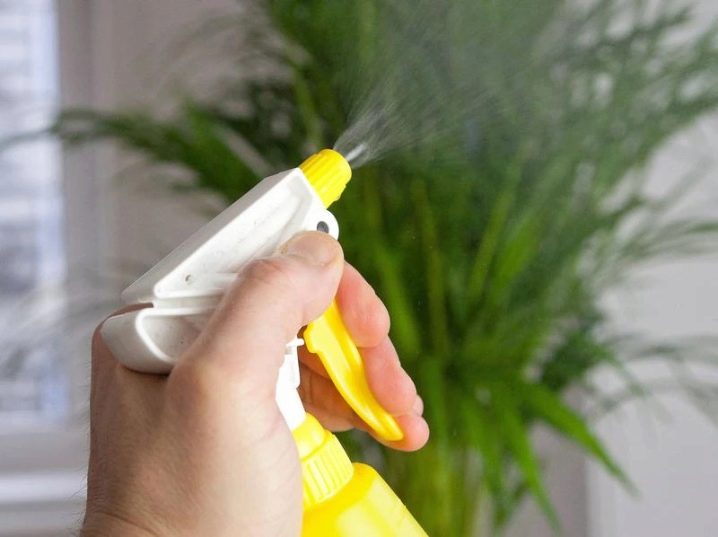
Watering
In the wild, the palm tree grows and develops in conditions of low rainfall. This plant has long roots, thanks to which it is able to extract moisture even in the absence of rain. But at home, the culture needs to provide a sufficient amount of moisture. Stagnation of moisture must not be allowed, therefore, all the liquid accumulated in the pallet must be immediately drained, and the bottom must be wiped with a dry cloth.
For irrigation, settled water is used, it is impossible to water a palm tree with hard chlorinated water: this is fraught with the development of chlorosis. If a palm tree was grown from a stone, then until the sprout appears, it should be watered occasionally. The soil in the pot should be almost dry before irrigation.
The soil under the young palm tree is moistened by 3-5 cm as the top layer dries. The plant needs the maximum amount of moisture from May to August.
In winter, the number of irrigations should be minimized as the palm enters the dormant stage.
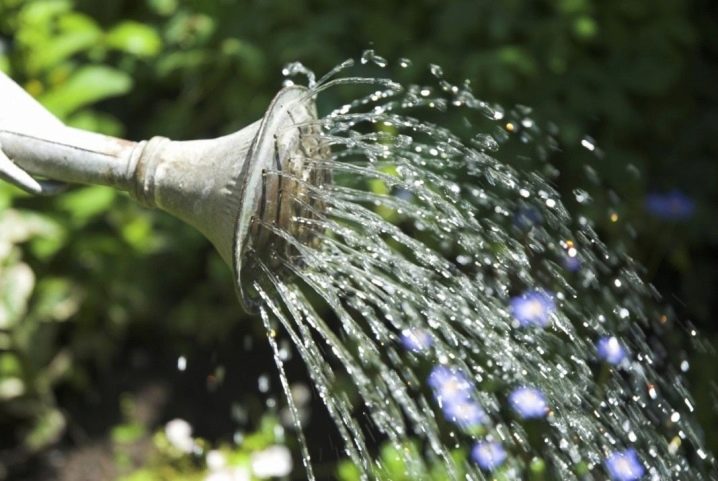
Top dressing
In retail outlets for flower growers, you can always buy ready-made fertilizers for palm trees: they are optimal for feeding this exotic plant. Compositions for decorative deciduous indoor crops are also suitable: they include a lot of nitrogen. This trace element is responsible for the active build-up of green mass. The most effective drugs are Good Power, Bona Forte, as well as Ideal, Garden of Miracles, Etisso and Uniflor-micro.
Fertilizers are applied to a moistened substrate in strict accordance with the instructions. Like any plant culture, it is better to underfeed a palm tree than overfeed it. Fertilizers are also available in tablet form. They are convenient to use: you just need to stick them into the ground near the tree.
Alternatively, you can feed a green pet with potassium nitrate, it is taken in a proportion of 10 g per 1 bucket of water. When feeding in the winter season, date products should contain a minimum dosage of nitrogen.
A palm tree moved to the garden for the summer can be fed with chicken droppings or mullein, the first is bred in a ratio of 1 to 20, the second - 1 to 10.
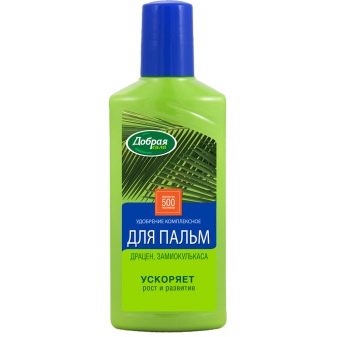
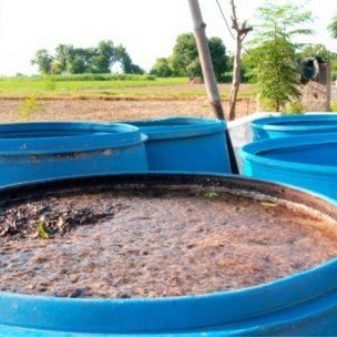
Pruning
When pruning a palm tree, it is important to be extremely careful. Only yellow, drooping and damaged leaves of adult trees should be cut off. During the first few years of life, the palm tree cannot be pruned at all. Also, do not remove the top of the plant, since the growth point is located in this part. Removing the top can destroy the plant.
Do not cut off yellowed leaves immediately. You need to wait until they dry completely.
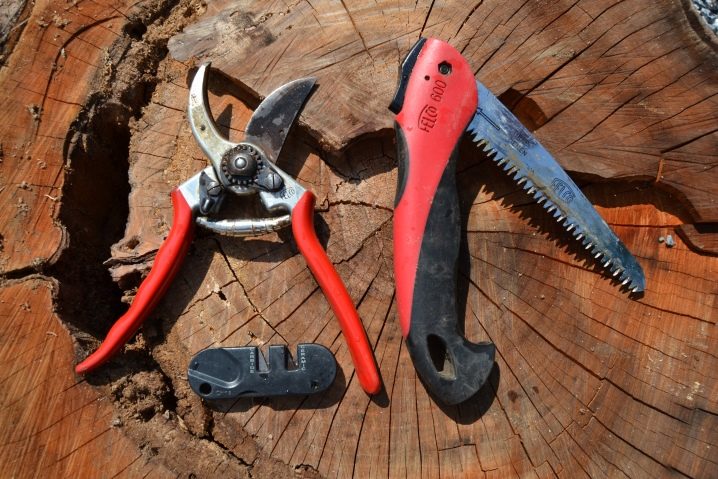
Transfer
The date tree is quite difficult to withstand replanting. This procedure is permissible only in 2 situations:
- the volume of the container cannot accommodate the rhizome;
- the plant was waterlogged, the root system began to rot.
Transplanting is possible only in the spring. When transplanting, the depth of the container must fully accommodate the entire volume of the plant rhizome. If the roots begin to look out of the drainage holes of the pot, this is a sign that an urgent need to plant the plant in a larger pot is required. A young plant is transplanted annually for the first five years of life, then - along the course of growth, usually every 3 years.
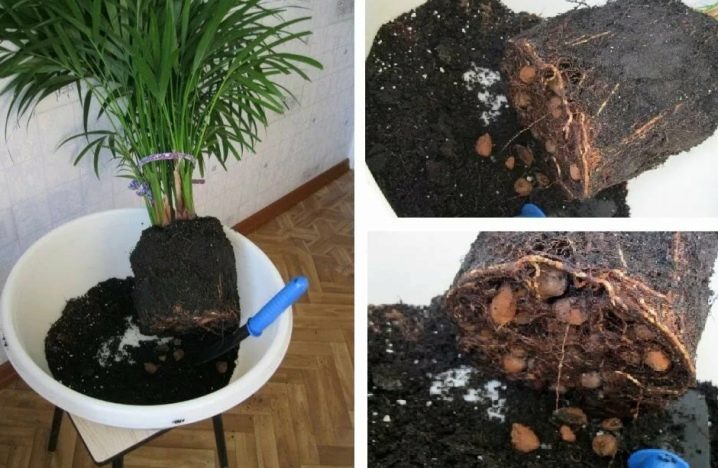
It should be borne in mind that the roots of the plant are quite delicate, they can be easily damaged. Therefore, they move the palm tree along with the earthen clod by transshipment. Before removing the palm from the container, it must be thoroughly watered. If the tree cannot be pulled out of the pot, it must be broken.
Important: you should not plant a palm tree immediately in a volumetric container. In such cases, it may stop growing.
Before planting, the bottom of the pot is lined with a layer of drainage: gravel, stones, chipped bricks, expanded clay. The amount of drainage directly depends on the size of the plant. The larger the palm, the more drainage should be. After transplanting, the tree is abundantly watered. If the time has come to transplant the tree, and its container still holds the roots, then for enrichment, you can replace the top layer of the soil. To do this, carefully remove 3-5 cm of soil from the pot and add a new soil mixture. These manipulations are advised to be performed every six months.
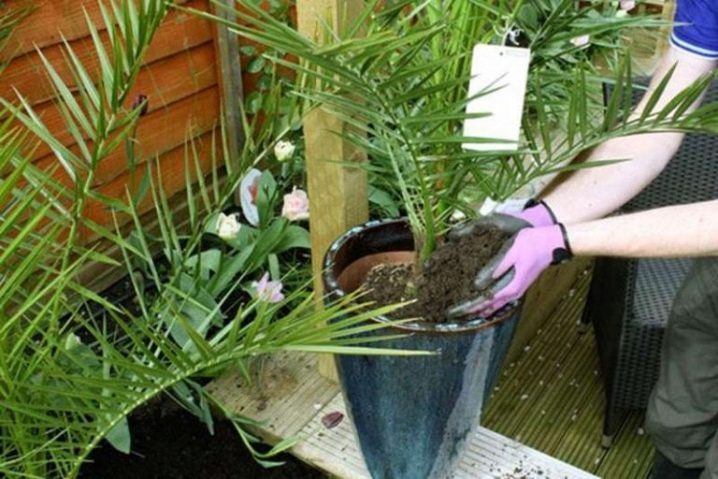
Reproduction
At home, you can grow a date plant exclusively from a stone. Certain varieties of palms can be propagated by cuttings. These include, for example, the Robelen date. However, this method is most often used by breeders. In everyday life, it is impracticable.
The seeds are buried in the ground by about 1-1.5 cm, sphagnum moss can be placed on top. For germination, the palm tree should be placed in a warm place with a temperature of 23-25 degrees. The surface of the ground should be kept moist. From above, the pot is covered with a film to create a greenhouse effect, while every day the shelter must be removed for an hour and a half and the planting must be aired.

The first shoots appear only after 4-6 months, although fresh seeds sprout after 20-30 days. Long-stored seeds germinate the longest. After the first shoots appear, the container with the plant is placed in a well-lit area in the house and left there for growth and development.
During the first years of growth, the date palm does not differ in great decorativeness. Each year a pair of new elongated leaves appears on it. Complex cirrus leaves are formed only at 4-5 years of age, during this period, pruning should not be performed.
The beauty of the plant is fully revealed 5-7 years after planting.
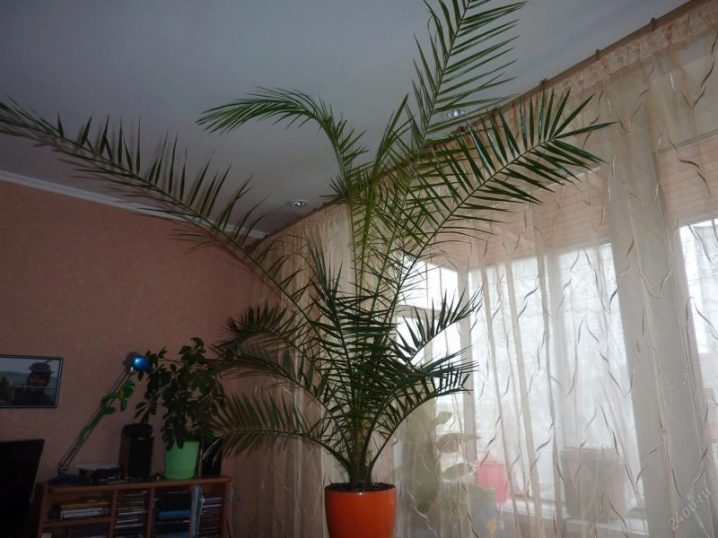
Diseases and pests
If the room palm turned pale, complex leaves began to deform and fall off, most likely, insect pests have settled on it. More often than others, it is attacked by spider mites, nematodes, worms, as well as thrips and scale insects. Various techniques are used to combat parasites: mechanical, chemical and biological.
A small number of insects can be collected by hand; treatment with a concentrated soap solution, garlic extract or tobacco infusion also gives a good effect. After finishing the treatment of the plant, the leaves must be rinsed with warm water and dried in a heated room. If a date plant is affected by nematodes, the palm tree must be destroyed along with the soil and the pot, since the pest can infect nearby flowers.
With proper care, the date palm hardly suffers from infections. However, it can develop fungal diseases such as brown spot and pink rot. Fungicidal agents are used to cure infected plants. Processing is carried out no more than 1 time in 7-10 days.
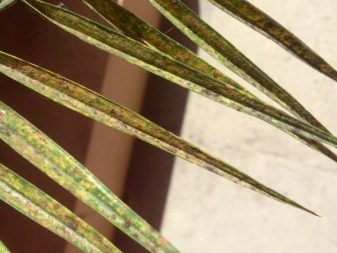
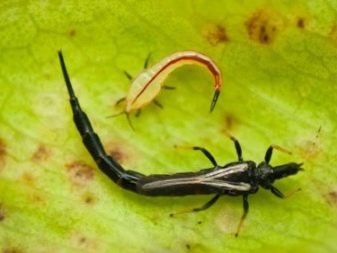
Possible growing problems
With an insufficient nitrogen content in the soil, the leaves of the date palm turn yellow, dry, and soon the plant stops developing and growing. Potassium deficiency causes the leaves to become stained with a bronze-brown color, and then curl and dry out. If the palm tree lacks magnesium, then a yellow edging is noticeable on the leaf blade.
A common problem when growing a palm tree is stunted growth. This often happens when the soil is too acidic, causing a lack of manganese and iron. Therefore, it is extremely important to maintain the correct temperature regime and ensure the acidity of the substrate within a pH range of less than 7 units.
Sometimes the leaves of the date palm dry up from the tips, this directly indicates too low humidity in the room. To remedy the situation, you need to install a humidifier or place a bowl of water next to a palm tree. Do not be lazy to spray and wash the leaves.
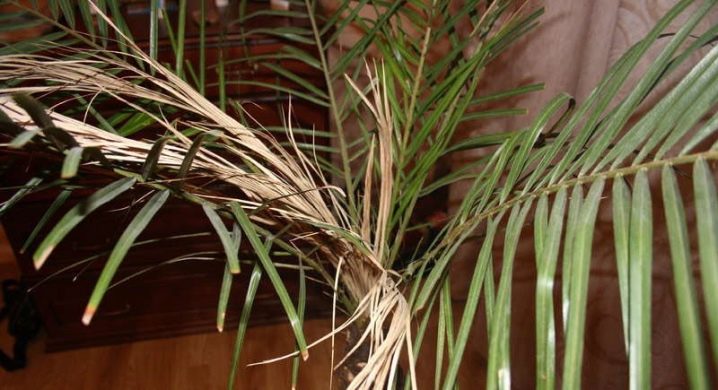
If you do not take care of a green pet, then the plant will lose its exoticism. Remember that the date palm dries up exclusively from the careless owner.






























































The comment was sent successfully.